Mobility, the ability and freedom to travel, has always been an integral part of human civilizations. In the 21st century, with sprawling urbanization and colossal population, public transportation is increasingly recognized as one of the most sustainable means of mobility. The railways and metro rail networks in India are either fractured or under-developed and does not offer last-mile connectivity, making buses the most suitable way to commute people over short and long distances in both metro cities and rural hinterlands. The state-owned bus networks, in particular, help sustain the economic and social lives of people, especially those in middle and low income levels, and are critical for social cohesion by enabling them go about with their day-to-day routines smoothly. The State Transport Undertakings (STUs), embracing the principle of welfare and samaritan service, are the sole transporters of people who can’t afford private mobility, have disabilities, and those living in lower-class or remote areas (When was the last time you noticed metro rail network covering a slum within a city?).

Yet, as we all observe, STUs are in great distress themselves, suffering from huge operational losses, are not efficient, plagued with poor service, and remain stagnant in terms of strength and capacity enhancement, not even meeting the pace of population growth and urbanization. Unlike any regular business entity, they perform a huge role in the social development of the nation and its citizens more evidently, therefore, their well-being and revival is the need of the hour. The National Seminar and Exhibition on “Sustainability for Public Transport through Innovative Interventions” held on March 15 shared some innovative interventions and alternative revenue models to resurrect STUs and make them sustainable, drawing from their own experiments and experiences. The seminar was a part of 61st Annual Conference of Association of State Road Transport Undertakings (ASRTU) – the apex body representing all STUs in India.
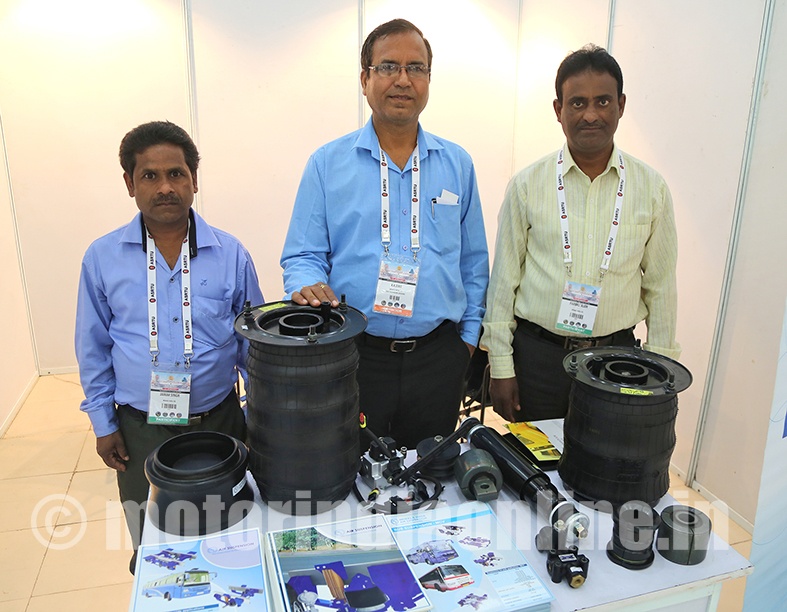
Speaking on the occasion, Mr. Abhay Damle IRS, Joint Secretary (Transport), Ministry of Road Transport and Highways, said that STUs must engineer innovation in the areas of operational costs and value-addition in services, drawing example from the burgeoning taxi industry in metros. He pushed for a ‘balance sheet tally model’ for the transport corporations, even while embracing welfare model of business and plying for social causes. He acknowledged the issue of viability gap in terms of funding for the technological renewals of SRTUs, urging all the stakeholders to overcome such structural constrains by improving occupancy ratio and capacity enhancement.
“Technological interventions and diversification of revenue are key to the prevailing challenges faced by STUs”, said Mr. Malakondaiah, Vice Chairman and Managing Director of Andhra Pradesh SRTC, while referring to the ways and means to make the transport undertakings viable in the present scenario. He identified over 28 streams of non-ticket revenue out of cargo transportation and commercial activity potentials out of existing assets including vehicles, bus stations, depots, etc.
Talking on similar lines, Mr. N. Sudershan, Deputy CTM, Telangana SRTC, highlighted TSRTC’s initiatives of leasing out its lands for fuel outlets and co-branding of packaged drinking water sold at leased out kiosks at bus stations as alternative source of revenues.
On taming the high fuel costs that on an average account for over 20 to 25 per cent of the total expenditure of STUs, Mr. Amit Talwar, Director, Chandigarh Transport Undertaking (CTU), recognized behavioral change as a key factor in improving vehicle efficiency and road safety. Locating their unique Driver Training Programme as a part of chain management has resulted in improved mileage of up to 15 per cent in test conditions, he added. CTU has also embarked on Automated Bus Fueling system using RFiD tags on all its vehicles and Management Information System (MIS) to bring down fuel costs.
Uttar Pradesh State Road Transport Corporation (UPSRTC) gained a lot of awe and appreciation from the participants at the conference, for its incredulous turnaround of Rs. 396.23 lakhs profit (2014-15 audited) from a cumulative loss of Rs. 13,153.94 lakhs the previous year (audited) – all using the magic wand of IT-enabled management tools and services to its commuters.
Mr. Vineet K. Seth, General Manager, UPSRTC, said that IT tools do not deliver direct revenues but create an enabling environment which contributes to profitability. He added that these IT solutions reduce cost of operations by generating a stream incremental revenue, along with standardization of business rules and customer-friendly approach.
“The improvement in revenue through innovative IT means are used for structural strength and capacity of the network, while aiming to double the passenger capacity”, said Mr. K. Ravindra Naik IAS, Managing Director, UPSRTC.
Moving further, speakers at the seminar discussed on the scope of electronic payment in creating a hassle-free revenue model in ticketing and fare-collection, incorporating last mile connectivity and ‘smart mobility’ approaches while designing roadmaps for SRTUs, and the efficacy of developing low-cost mass transit systems in the current scenario.
Mr. Sanjay Mitra IAS, Secretary, Ministry of Road Transport and Highways, and President of ASRTU, added new dimensions to the discussion by urging SRTUs to adopt road safety initiatives and expedite shift to hybrid and electric vehicles while carving out their roads to sustainability. He also assured constant patronage and financial support from the central government for the road transport sector, along with strong impetus for infrastructural development and asset creation.
“The STUs are islands of excellence (despite multiple challenges plaguing them)”, said Mr. PS Ananda Rao, Executive Director, ASRTU, acclaiming that they perform the best Corporate social responsibility (CSR) in the transportation sector as an integral part of their core business. Despite accounting for not more than 10 per cent of total buses in India, STUs commute over 70 million people every day, and is thrice larger than the network of Indian Railways, he added. He listed out various modules developed by the ASRTU that are up for grabs by the STUs, like ticketing portal, leasing and hiring models, etc. ASRTU is also offering rate contracts and Vendor Development Registration Schemes (VDRS) to guide and assist regional transport units to procure spares at fair prices.
The statistics are worth revisiting. STUs have recorded a whopping Rs. 9,732.11 crore net loss in the financial year 2013-14, with an increase of 27 per cent from the previous period, according to ASRTU. The manpower cost is pegged at 33 per cent. The revenue earning kilometers has also reported a drop by 2.8 per cent. Clearly, STUs are not in a position to strengthen their portfolio as they are unable to generate adequate funds for capital expenditure, replacement of their fleets, and any further expansion to cover unconnected areas. Their over-dependence on the ticketing income (up to 94 per cent of total revenue) is a sure-shot liability. Therefore, sustained Viability Gap Funding (VAG) and revival packages (on the lines of Ujwal DISCOM Assurance Yojana (UDAY) for power distribution companies) is essential for all STUs to consolidate their position. By no means can any of this public spending be reasonably described as ‘subsidy’ that distorts competitive business, considering the social importance of SRTUs in the lives and development of the masses. Further, public funding of regional bus networks is likely to deliver benefits at least thrice the size of the money being spent on other means of transportation including railways.
However, in the era of liberalized business and unreliable political patronage, state funding is unlikely to be sustainable for the revival and growth of STUs. They have to look for multiple streams of revenues and diversified service models, to generate steady source of capital for their modernization and expansion. New revenues can then be cross-subsidized for their welfare and social initiatives like connectivity to remote tribal villages. In this regard, innovative IT and other tech-enabled interventions seems to be effective, like in the case of UPSRTC.
BOSCH
German component powerhouse Bosch presented its India-made telematics solution that offers a host of services for STUs.
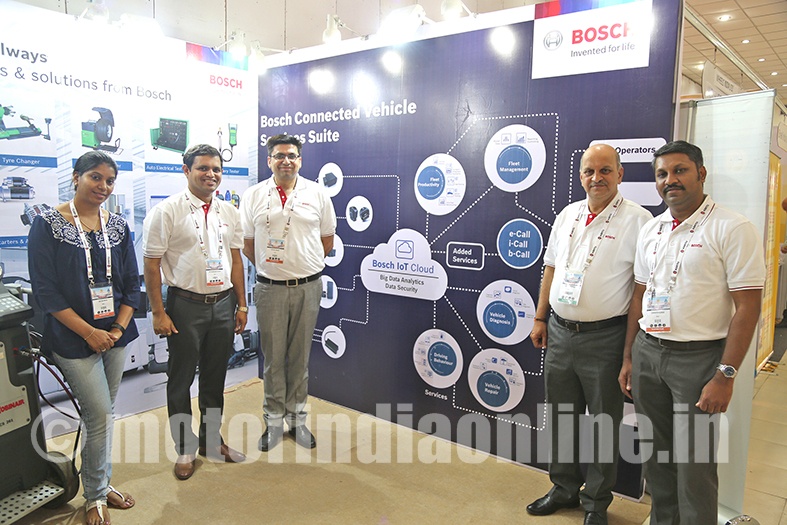
The new hardware from Bosch is an IP67 device which gathers real-time data providing a telematics solution operating on a cloud-based ecosystem; which yields a high value addition to transportation sector. The multi-function vehicle-independent device, with an in-built SIM card and internal data storage, connects to the vehicle battery.
The system uses the data to deliver a range of services including monitoring fleet productivity, fleet management, vehicle diagnosis (preventive maintenance), vehicle repair, driving behavior and also offers additional services such as e-Call, i-Call and b-Call. Additionally, the device can be integrated to devices like Panic button, Fuel monitoring and Two-way voice communication modules.
An integrated Passenger Information system helps STU’s to have real time updates: Bus information (OTA, ETA, Delay), Bus Stops and Depots on mobile App, SMS Alerts, Email.
A fully-customizable solution as per customer specific requirements, Bosch can deploy the solution which will enable STU’s to build a scalable and robust system that can manage and cater to the needs of their fleets today, tomorrow and in the future with secure data, software and hardware on a foolproof encrypted end to end ecosystem form a single source.
Madras Engineering Industries
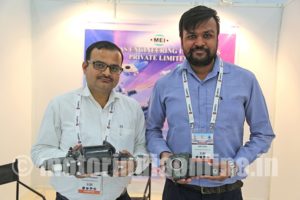
Madras Engineering Industries Pvt. Ltd. (MEI) showcased its range of automatic slack adjusters and its clutch boosters for multi-axle vehicles that are used for air braking. A clear market leader in the product segment, MEI’s made-in-India slack adjusters are repairable and are also available as kits suitable for all OEMs.
Source Automotive Parts
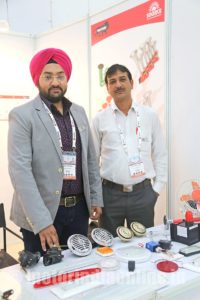
Source Automotive Parts, manufacturer, exporter, and supplier of automotive parts to the automotive industry, made its first appearance at the ASRTU Annual Conference. The company presented a range of products including LED lighting systems, LED displays, electric horns and relays, which it offers to OEMs in across different vehicle segments including trucks, buses, passenger cars, two-wheelers and tractors and the aftermarket. Source Auto currently supplies to some of the top STUs in the country including MSRTC, APSRTC, UPSRTC, HRTC and Haryana Roadways and is working on further expanding its presence in the segment.
JSS Steelitalia
JSS Steelitalia Ltd., a three-way joint venture between Inox Market Services s.r.l of Italy, Jindal Stainless Steelway and Jensita Holdings, demonstrated the advantages of stainless steel in bus body building, as part of its sustained efforts to promote safety in the Indian bus market.
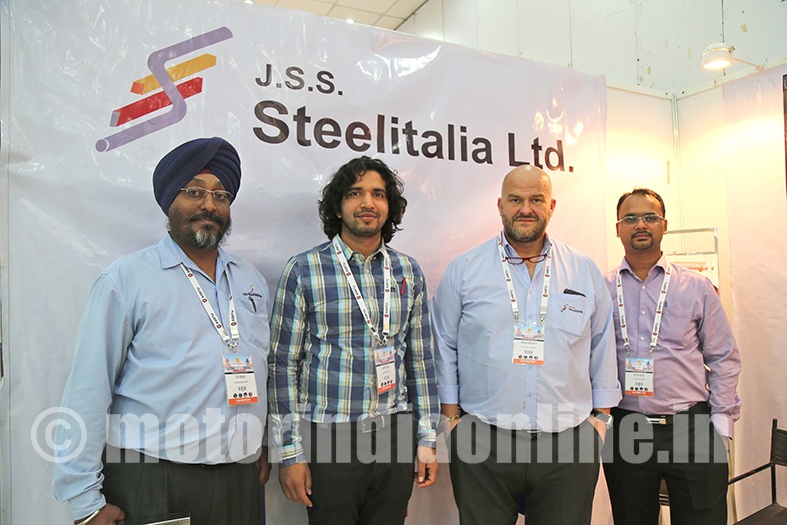
Says Mr. Mauro Mozzato, Chief of Business Unit, JSS Steelitalia Ltd.: “The target for us is to promote safety in buses. Carbon steel starts rusting after just a year. With Stainless Steel (SS), rust becomes a secondary issue and the bus body is much lighter in weight, thereby leading to better overall efficiency. The additional investment up front (of around Rs. 50,000 to Rs. 80,000 only) could be recovered in an average of three to four months. And mind you, this return of investment is based only on fuel savings, without taking into account the 15 to 20% saving on maintenance costs as a result of lesser wear and tear of tyres, brakes, transmissions by using SS body.”
With the weakest points in a bus structure being the corners and joints, JSS presented SS samples of corners and joints developed using laser-cut tubing technology which it has adopted from Europe and indigenized with support from a local partner Metafil. The laser-cut tubing parts were 65 per cent stronger than their carbon steel counterparts despite being lighter in weight, posing a compelling reason for STUs to consider moving to SS for bus body structures.
Trans ACNR Solutions
Trans ACNR Solutions Pvt. Ltd., the exclusive bus air-conditioning company, had the privilege of being the sole HVAC exhibitor at the event, using the opportunity in highlighting the quality and cost-competitiveness of its JTAC branded AC units. As part of its efforts to provide the best overall customer experience, the company has established arguably the best after-sales support in the bus AC segment in the country. Having tasted remarkable success with private bus operators, JTAC is now fast-expanding its presence among STUs.
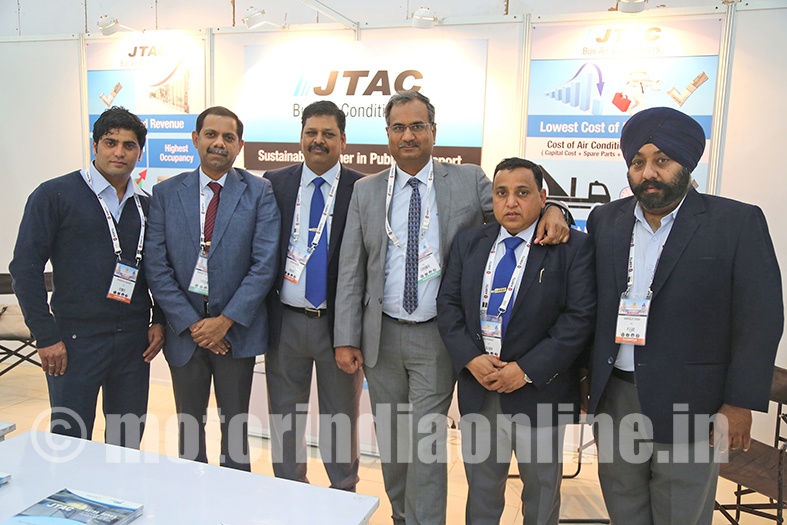
Says Mr. Shatrughan Kumar, Managing Director, Trans ACNR Solutions Pvt. Ltd.: “We have recently bagged orders from UPSRTC, OSRTC and TSRTC. Other STUs who have been using our AC units over the years include KSRTC (Karnataka), SETC (Tamil Nadu), PSRTC (Punjab), PUNBUS (Punjab), and CTU (Chandigarh). While the STUs have been tracking our performance and noticing our consistent growth, they also see leading private operators like SRS, Purple Prasanna, Kallada, Orange and many others using our products, which has given us very good visibility. The major part of our sales figures in the coming years is bound to be powered by STUs, since they have felt and observed the unmatched performance and reliability of our product as well as the aftersales support we have entrenched in India over the last 14 years.”
Talking about the AC life cycle cost which was one of its primary areas of emphasis at the event, Mr. Kumar adds: “We keep the life cycle cost of our products under control. We do not just sell products; we supply, as well as apply, by way of providing ownership throughout the life cycle of the product. With JTAC, the average cost of air-conditioning is just about 80 paisa per km (which includes the cost of the AC unit as well as the spares and service maintenance cost) which is probably the lowest in the market today. Due to our transparent approach, STUs can calculate the life cycle cost of their AC units, thereby keeping their expenses well under control.”
Trans ACNR has closed FY17 with its best-ever performance, selling a total of 5,200 units during the year, and is targeting close to 30-40 per cent growth in FY18.
By Dhiyanesh Ravichandran & N. Balasubramanian